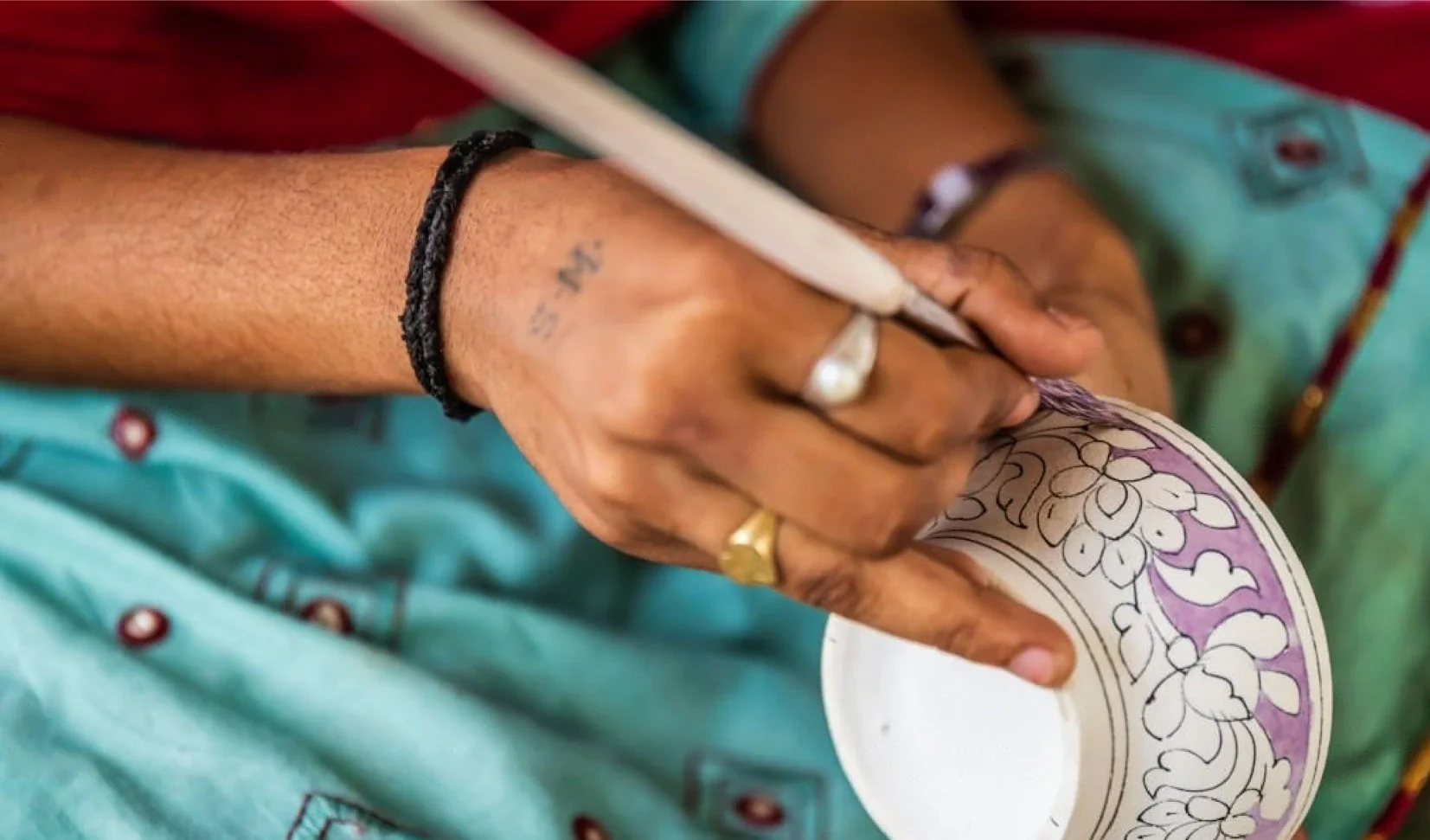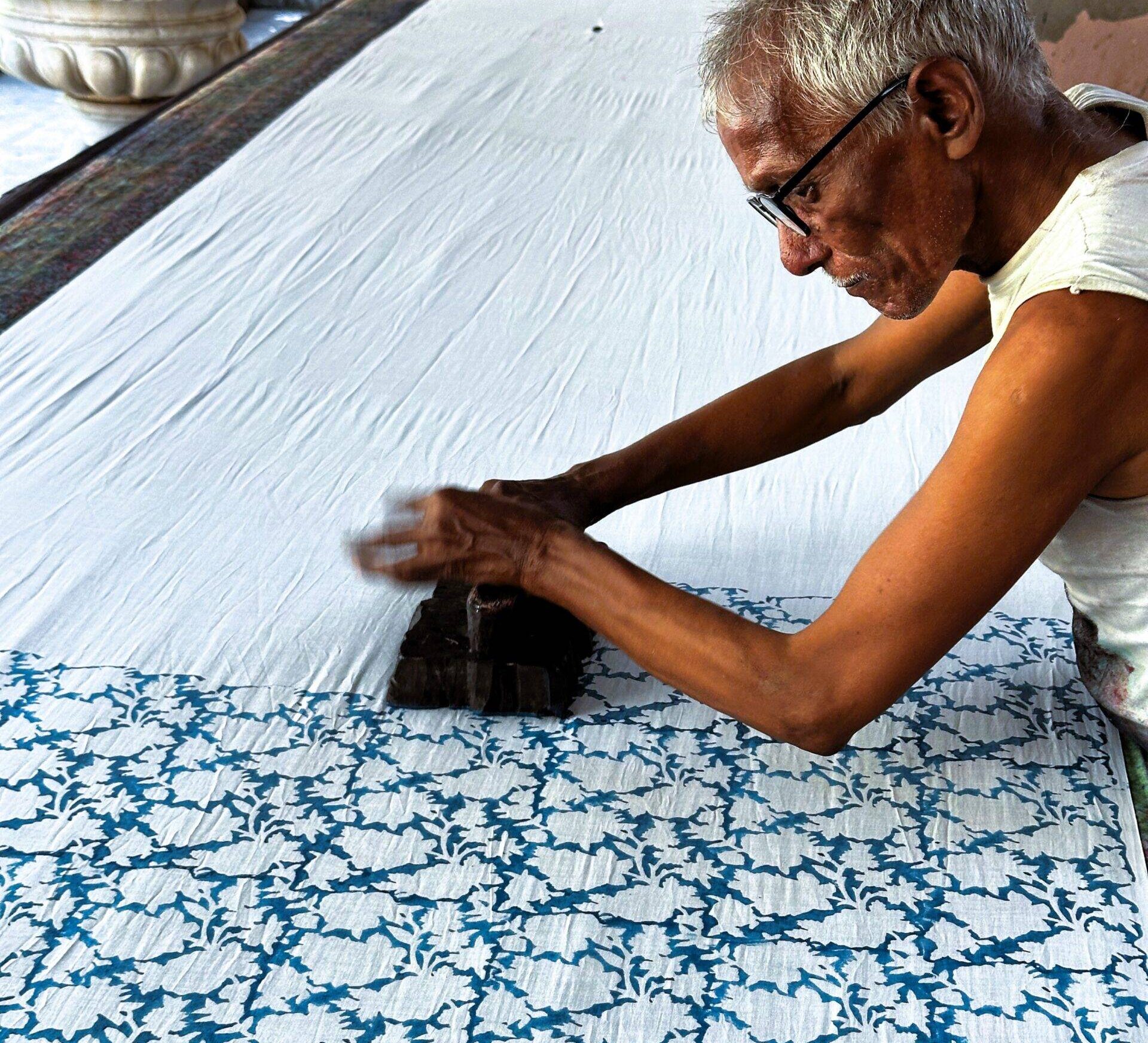Introduction to Blue Pottery Jaipur
Jaipur, the vibrant capital of Rajasthan, is renowned for its rich cultural heritage and exquisite arts and crafts. Among its many artistic treasures, Jaipur’s Blue Pottery stands out for its distinct beauty and intricate craftsmanship. This unique form of pottery is not only a symbol of the city’s artistic prowess but also a testament to its historical and cultural significance.
Brief Overview of Jaipur and Its Significance in Blue Pottery
Jaipur, often called the Pink City due to its distinct architectural style, has long been a center for arts and crafts in India. The city’s significance in Blue Pottery is immense, as it has played a pivotal role in preserving and promoting this ancient craft. Blue Pottery, known for its eye-catching blue and white designs, has become synonymous with Jaipur, drawing artisans and art enthusiasts from around the world.
Historical Origins and Cultural Significance
The History of Jaipur in Blue Pottery
The origins of Blue Pottery in Jaipur can be traced back to the 19th century when it was introduced by Persian artisans. Over time, the craft evolved, blending Persian influences with local techniques to create the distinct style we see today. Jaipur’s Blue Pottery has since become a cherished part of Rajasthan’s cultural heritage, celebrated for its artistic and historical value.
Importance in Blue Pottery Culture and Traditions
Blue Pottery holds a special place in Jaipur’s culture and traditions. It is often used in various cultural ceremonies and as decorative pieces in homes and palaces. The craft reflects the city’s rich history and artistic sensibilities, making it an integral part of Jaipur’s identity.
The Art of Creation: Techniques and Materials
Detailed Explanation of the Traditional Techniques Used
Creating Blue Pottery is a meticulous process that involves several traditional techniques. The craft begins with preparing the dough using quartz powder, glass, Fuller’s earth, borax, gum, and water. The dough is then molded into desired shapes and fired at low temperatures. Once the pieces are hardened, they are coated with a unique blue dye derived from cobalt oxide and then decorated with intricate designs using a brush.
Types of Materials Involved in the Process
The primary materials used in Blue Pottery include quartz, glass, Fuller’s earth, and natural dyes. The blue dye, which gives the pottery its distinctive color, is made from cobalt oxide. These materials are carefully sourced and combined to create the unique and durable Blue Pottery pieces that Jaipur is famous for.
Designs and Patterns: A Reflection of Blue Pottery Aesthetics
Common Motifs and Patterns Found in Blue Pottery Jaipur
Blue Pottery is known for its beautiful motifs and patterns, which often draw inspiration from nature. Common designs include floral patterns, animal motifs, and geometric shapes. These intricate patterns are meticulously hand-painted, adding to the uniqueness of each piece.
Symbolic Meanings Behind the Designs
The designs in Blue Pottery are not just aesthetically pleasing but also carry symbolic meanings. Floral patterns often represent growth and prosperity, while animal motifs symbolize strength and protection. These designs reflect the deep cultural roots and artistic traditions of Jaipur.
Notable Artisans and Workshops
Profiles of Renowned Artisans
Jaipur is home to many renowned Blue Pottery artisans who have dedicated their lives to preserving and innovating this craft. Artisans like Kripal Singh Shekhawat are celebrated for their exceptional skills and contributions to the art form. Their work has garnered national and international acclaim, bringing recognition to Jaipur’s Blue Pottery.
Overview of Famous Workshops and Their Contributions
Several famous workshops in Jaipur have played a crucial role in promoting Blue Pottery. Workshops like Kripal Kumbh and Neerja International are known for their high-quality craftsmanship and innovative designs. These workshops have not only preserved traditional techniques but also introduced modern elements to keep the craft relevant.
Applications and Varieties of Jaipur Products
Different Products Made from Jaipur Blue Pottery
Blue Pottery from Jaipur is versatile and used to create a wide range of products. These include vases, bowls, plates, boxes, trays, and decorative tiles. Each product showcases the intricate designs and vibrant colors characteristic of Jaipur’s Blue Pottery.
Innovative Uses and Contemporary Adaptations
In recent years, Blue Pottery has seen contemporary adaptations, with artisans experimenting with new designs and applications. Modern uses include decorative panels, jewelry, and even bathroom accessories, demonstrating the craft’s adaptability and enduring appeal.
Economic Impact and Sustainability
The Role of Jaipur in the Local Economy
Blue Pottery plays a significant role in Jaipur’s local economy, providing livelihoods to many artisans and craftsmen. The craft attracts tourists and art collectors, contributing to the city’s tourism industry and generating income for local businesses.
Sustainable Practices in the Craft
Sustainability is an important aspect of Blue Pottery. Artisans in Jaipur are increasingly adopting eco-friendly practices, such as using natural dyes and recycling materials. These efforts ensure that the craft remains sustainable and environmentally friendly.
Preservation and Modern Challenges
Efforts to Preserve the Traditional Craft
Various initiatives are underway to preserve the traditional craft of Blue Pottery in Jaipur. These include government schemes, NGO programs, and efforts by local artisans to teach the craft to younger generations. Such initiatives are crucial in keeping the heritage of Blue Pottery alive.
Challenges Faced by Artisans Today
Despite these efforts, artisans face numerous challenges, including competition from mass-produced imitations, rising material costs, and limited market access. Addressing these challenges is essential to ensure the survival and growth of Blue Pottery.
How to Identify Authentic Blue Pottery Jaipur
Tips for Distinguishing Genuine Pieces from Imitations
Identifying authentic Blue Pottery requires a keen eye for detail. Genuine pieces are known for their smooth finish, vibrant colors, and intricate hand-painted designs. Look for the hallmark signs of quality craftsmanship and the use of traditional materials.
What to Look for in Quality Craftsmanship
Quality craftsmanship in Blue Pottery is evident in the precision of the designs, the smoothness of the glaze, and the overall finish of the piece. Authentic Blue Pottery from Jaipur will also have a unique, handmade feel that sets it apart from machine-made imitations.
Experiencing Jaipur Craft in Blue Pottery
Places to Visit for a Hands-On Experience
To truly experience Jaipur’s Blue Pottery, visiting local workshops and artisan studios is a must. Places like the Jaipur Blue Pottery Art Centre offer visitors the chance to see artisans at work and even try their hand at creating their own pieces.
Recommendations for Tours and Workshops
There are several tours and workshops available in Jaipur that provide an immersive experience in Blue Pottery. Workshops often include guided sessions with skilled artisans, giving participants a deeper understanding of the craft and its techniques.
DIY: Trying Your Hand at Jaipur Blue Pottery
Simple DIY Project Ideas for Readers to Try at Home
For those inspired to try Blue Pottery at home, simple DIY projects can be a great start. Creating small items like coasters or decorative tiles can be a fun and rewarding experience. All you need are some basic materials, patience, and creativity.
Basic Steps and Tips for Beginners
- Gather Materials: You’ll need clay, cobalt blue dye, a brush, and a kiln for firing.
- Mold the Clay: Shape the clay into your desired form and let it dry.
- Paint the Design: Use the cobalt blue dye to hand-paint your design onto the clay.
- Fire the Piece: Once the paint is dry, fire the piece in a kiln to harden it.
Experiment with different designs and techniques to create your own unique Blue Pottery pieces.
Conclusion: The Enduring Legacy of Blue Pottery Jaipur
Jaipur’s Blue Pottery is more than just a craft; it’s a symbol of the city’s rich cultural heritage and artistic legacy. From its historical origins to modern adaptations, Blue Pottery continues to captivate and inspire. As we celebrate this timeless art form, we also recognize the importance of preserving it for future generations. The enduring legacy of Jaipur’s Blue Pottery is a testament to the city’s vibrant culture and unwavering dedication to craftsmanship.
10 Customer FAQs
- What makes Blue Pottery unique?
- Blue Pottery is unique due to its vibrant cobalt blue designs and use of quartz instead of clay.
- Where can I buy authentic Blue Pottery in Jaipur?
- Authentic Blue Pottery can be purchased from reputed workshops and stores like Kripal Kumbh and Jaipur Blue Pottery Art Centre.
- How do I care for Blue Pottery items?
- Blue Pottery items should be handled with care, cleaned with a damp cloth, and kept away from extreme temperatures.
- Is Blue Pottery microwave safe?
- Most Blue Pottery is not microwave safe due to the materials used and the risk of cracking.
- Can I visit Blue Pottery workshops in Jaipur?
- Yes, many workshops in Jaipur welcome visitors and offer tours and hands-on experiences.
- What are the common designs in Blue Pottery?
- Common designs include floral motifs, animal figures, and geometric patterns.
- How is the blue color achieved in Blue Pottery?
- The blue color is achieved using cobalt oxide dye, which is applied before firing.
- Is Blue Pottery environmentally friendly?
- Many artisans are adopting eco-friendly practices, making Blue Pottery increasingly sustainable.
- Can I learn Blue Pottery making in Jaipur?
- Yes, several workshops and courses in Jaipur teach Blue Pottery making to enthusiasts.
- What should I look for when buying Blue Pottery?
- Look for smooth finishes, vibrant colors, and intricate hand-painted designs to ensure quality and authenticity.


